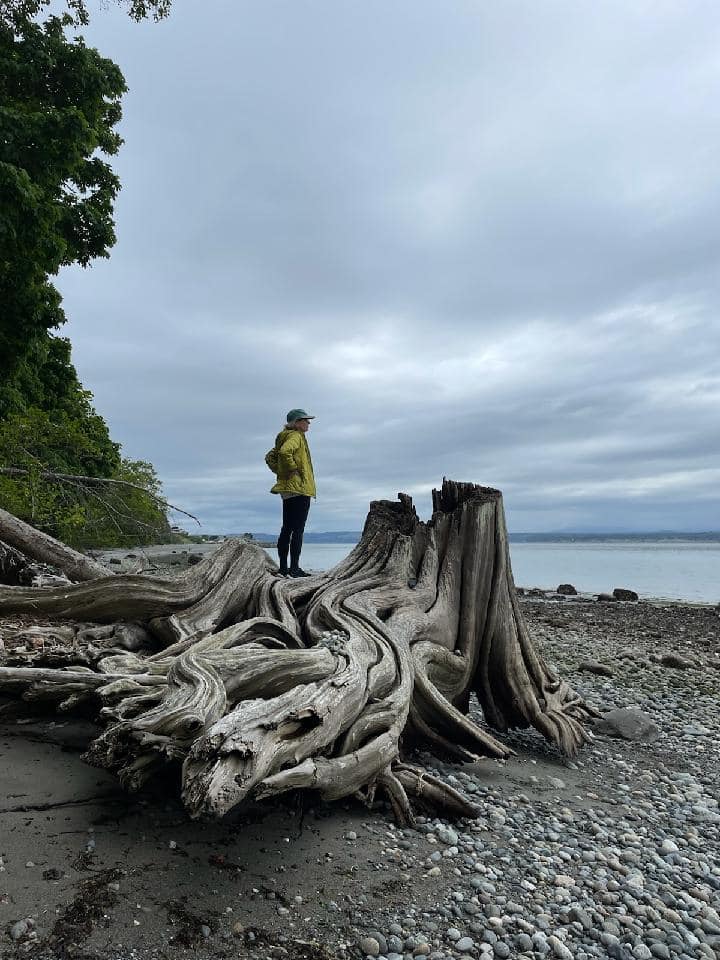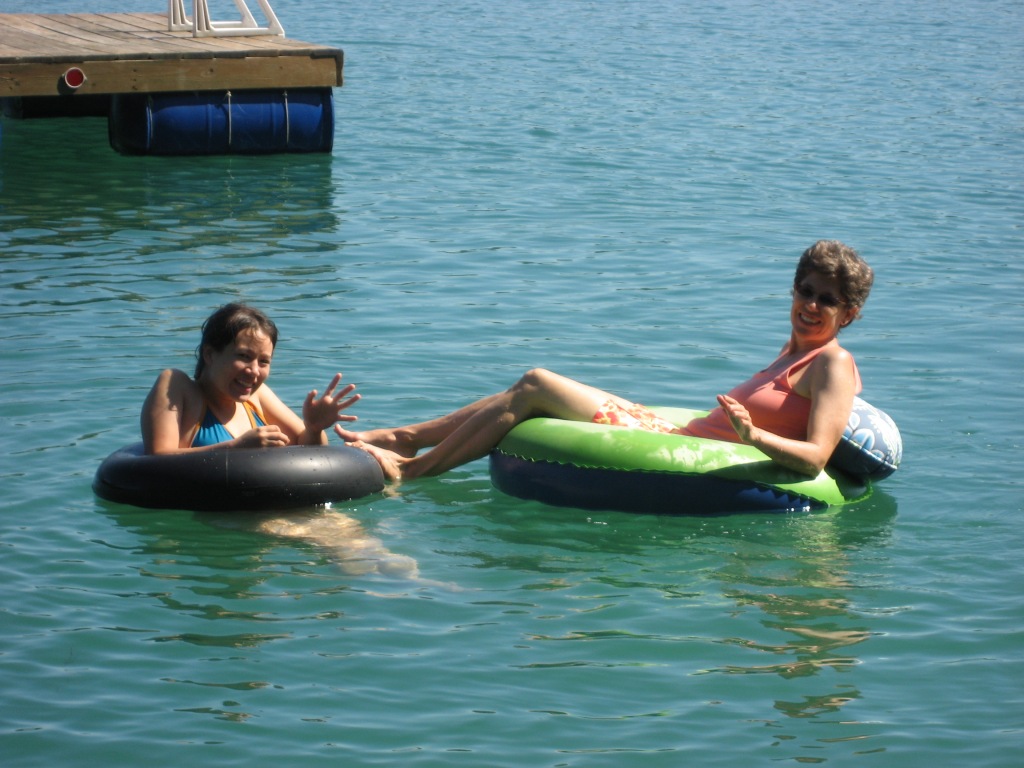
Noguchi sculpture and Space Needle, Seattle (photo by Barbara Terao)
“If you don’t like the road you’re walking, start paving another one.” ―Dolly Parton
I’ve been collecting words of wisdom. When an inspiring or poetic observation catches my eye, I add it to my quote file. Some of the quotations became epigraphs to head chapters in my memoir, Reconfigured. Some are saved for future reference — or serve as daily reminders.
As the collection grew, it was hard for me to find a particular quote when I needed it. One day, I decided to organize them by subject. Looking at the results, I noticed the biggest category was “Authentic Self” with 47 memorable quotes, which wasn’t a big surprise. One of the main themes in my writing is the importance of being ourselves — living an authentic life. The closest runner-up was the category of “Spirituality and Kindness,” with 43. “Psychology” and “Trust” had only one quote each, “Cancer-related:” 16.
If I focused on one set of quotes, what patterns or insights would be illuminated? Reflecting on a dozen or so notable statements regarding humanity and self-expression, I was able to explore the concepts as beams of wisdom lighting the way. We can learn to live an authentic life. We have the power to define ourselves. Sometimes, we just need someone to show us how.
Living an Authentic Life: Who Are You?
How do we know who we are? A strange question, perhaps, but one we can answer, at least partially. On the most primal level, we are part of nature, born of parents who are also part of nature, made of “star stuff,” as scientist Carl Sagan liked to say. Paddling a kayak on a lake or walking through a meadow, I know who I am when I feel connected to Mother Earth. Such activity also keeps us in touch with our physical bodies, an essential part of who we are, constantly giving us clues about our feelings if we pay attention. Dancer Twyla Tharp wrote about this in her book, Keep It Moving: “Day by day, move by move, practice who you are and where you are at that very moment. Being connected to your body in its current state will allow you to be more realistic about what you need next, both in your day and in your bounce back.”
There are also spiritual, philosophical, and religious definitions of what makes us who we are. For instance, Desmond Tutu, Archbishop Emeritus of Cape Town, emphasized our interconnected identities and the philosophy of “ubuntu,” saying in an SGI Quarterly magazine interview, “Ubuntu says a person is a person through other persons. I cannot be a human being in isolation. I need other human beings in order for me to become a human being.”
We need to be in community to help us understand who we are and why we’re here.
On the other hand, I need quiet time alone to hear myself think or, in meditation, to not think. Silence can be revelatory. The writer of The Marginalian, Maria Popova, advises us to include moments of peace in each day: “Build pockets of stillness into your life.”
And spiritual teacher Ram Dass invites us to settle deep into that stillness and listen: “The quieter you become, the more you can hear.”
Finding Your Authentic Life: What Are Your Needs?
Perhaps the topic of authenticity is most compelling to those of us whose core identities were splintered or lost as we adapted to others’ needs more than our own. We became distant from ourselves. Some people, I suppose, have always been true to themselves, which may be easier in some cultures, genders, or societies than others. I sometimes think about a rather pessimistic view of Western culture and the stunted roles we play, which comes from psychoanalyst Marion Woodman, who wrote about integration of the self. “Most people have been performing since they were tiny children. They don’t know there’s any other way to live.”
Growing up in the Midwest in the 1950s, this was true for me and most people I knew; our inner selves were hidden, with so much left unsaid. Prompted by an editor to add a takeaway message for my readers at the end of my memoir chapter about finding home, I wrote, “When you are only playing roles and amusing others, that’s a stage, not a home. When you are only serving others, that’s a job, not a home. Where I can hear myself and be heard, that’s home.”
When we are being real with ourselves, we have a better chance of being real with others — and feeling at home in our own bodies and minds.
The challenge for so many of us is to awaken to our inner selves and become more genuine than the roles we play. Brian Doyle has words for this in his novel, Marten Martin. It’s one of my favorite quotes. In a scene with a father and his teenage son, Dave, walking in the woods, Dave tries to speak his truth the best he can. His father responds, “That’s the final frontier for all of us. To take off as many masks as you can pry off and just be you.”
As I finished my memoir about going through cancer and other challenges, I realized authenticity (or U-B-U, as I wrote to myself in shorthand) was the deepest theme and most urgent message for my readers, because I came to understand that self-knowledge and acknowledging feelings contribute to health and well-being. Keep your emotions in motion, not stifled or stuck. Express them, if only to yourself or a trusted friend. It’s not healthy to ignore our pains, aggravations, and sorrows, as the Bard of Avon reminds us in Macbeth: “Give sorrow words; the grief that does not speak knits up the o’er wrought heart and bids it break.”
An Authentic Life: Be Honest With Yourself
Laura Nasi, M.D., is one of many doctors and caregivers who recommends listening to our bodies, intuitions, and emotions. In her book, Cancer as a Wake-up Call, Dr. Nasi reminds us that good health includes physical, mental, emotional, social, and spiritual well-being. In her view, “A disease might be the soul making its voice heard,” so we’d do well to listen.
For self-evaluation, psychology professor Amy Brunell, Ph.D., offers a series of questions about how much we’re letting others know who we truly are. As for me, I’ve had to evolve over the years to even come close to answering her questions with “Yes.” For instance, Brunell asks, “Are you acting according to your values, needs, and preferences or simply to please others, get rewards, or avoid negative consequences? Are you striving for openness and honesty in intimate relationships with the goal of having others know who you truly are?”
How open and honest are we with ourselves and others?
The costs of hiding ourselves are high. Martha Beck points out one of those costs in her book, The Way of Integrity, which particularly struck me: “If you don’t walk your true path, you won’t find your true people.” I would add, if you aren’t being your unique self, how can you fulfill your unique mission or purpose in life?
When we show our shining selves, we illuminate those around us. Author and educator Parker Palmer urges us to be visible: “When we feel certain that the human soul is no longer at work in the world, it’s time to make sure that ours is visible to someone, somewhere.”
Who knows who needs our kindness today? A genuine smile goes a long way.
Being Authentically You, Even With Transformation
Of course, our unique selves are not static. We learn, evolve, and change. As Walt Whitman wrote in his poem, Song of Myself, “Do I contradict myself? / Very well then, I contradict myself, / (I am large, I contain multitudes).”
As we go through illnesses, traumas, and other major events, we are transformed. After grueling cancer treatments, author Suleika Jaouad wrote about reassessing her life: “Though the word may suggest otherwise, recovery is not about salvaging the old at all. It’s about accepting that you must forsake a familiar self forever, in favor of one that is being newly born.”
Why be someone you’re not? You be you — and you’ll be invigorated.
In her book, Gift from the Sea, Anne Morrow Lindbergh warned us how tiring and tiresome pretensions can be: “The most exhausting thing in life, I have discovered, is being insincere.”
We have the power to define ourselves and tell our own stories. I’ll leave the last words of wisdom to singer and writer Tina Turner, who advises us to evict the negative voices in our heads and free our creativity and self-determination:
“…It’s time to tell those voices you’ve heard their propaganda, and you’re not going to take it anymore. Dismiss them, and you will be the only one holding the pen as you write the story of your life.”
Show your soul and it will light the way. Ultimately, you embrace your own life, befriend your own self, and tell your own story.
















 She disappeared off the face of the earth in February 1977.
She disappeared off the face of the earth in February 1977.

